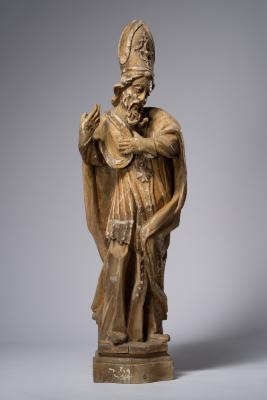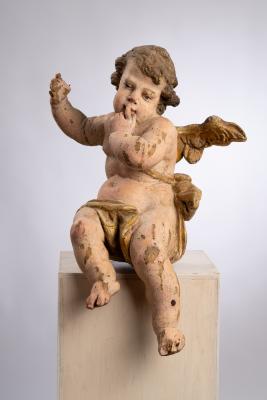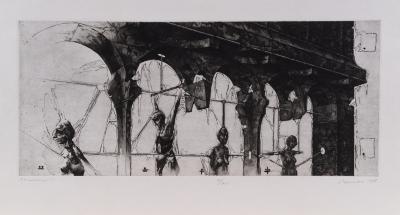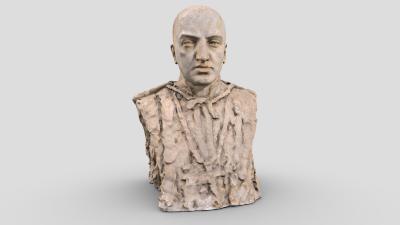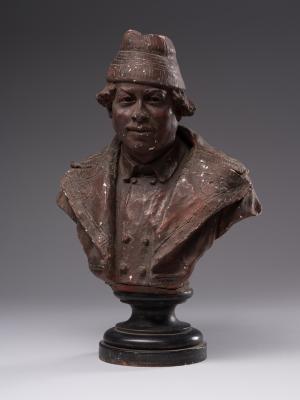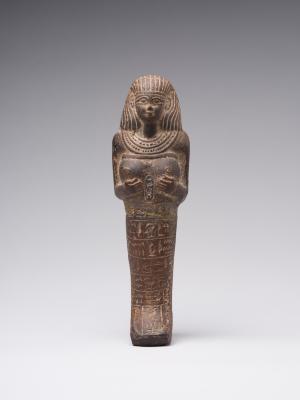The engraving with such a name performed by B. Pinelli was first issued in the album dated 1809. It depicted three women and two children washing clothes in Lake Albano, near Rome. The composition, similar to the so-called Lviv version but not painted with watercolours, which depicted three washerwomen, was performed by the artist in 1815 and issued in the album Nuova Raccolta di Cinquanta Costumi Pittoreschi incisi all 'acquaforte da Bartolomeo Pinelli Romano, Nicola de Igna impresse Pavon Offre e Dedica published in Rome in 1816. The colour version of the engraving with a not-so-detailed drawing compared to the Lviv version is known from the album Costume Popolare, tratto dalla Nuova Raccolta di Cinquanta Costumi de' contorni di Roma compresi diversi fatti di brigandi disegnati ed incisi all'acqua forte (Costume Popolare, taken from the "New Collection of Fifty Costumes from the Contours of Rome Including Several Facts of Brigands Drawn and Engraved in Aquaforte"), which included 16 engravings. The album was published by Giovanni Scudellari in Rome in 1823. A slightly modified version of the engraving of Costumi di Albano performed by Karl Ludwig Frommel was published in the album Pittoreskes Italien in Leipzig in 1840; it included 103 engravings. In the foreground, one can see three women washing the laundry in Lake Albano, one of the cleanest mountain lakes in the Apennines. In the centre is a monumental figure of a woman looking like an ancient sculpture with a board of washed linen on her head. On her right, a woman sits under a tree close to a large copper jug. In the jug, there is linen brought for washing. A third woman on her knees is washing a bed sheet in the lake. The rich range of colours of the women's clothing, namely red, blue and yellow tones, highlight the female images. The background with trees, mountains, and the sky is depicted in a dimmed blue and green range.











